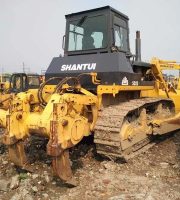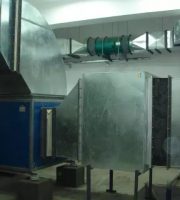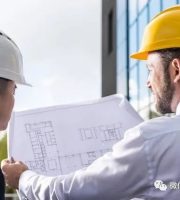The “Three Treasures” are the three treasures for the safety protection of construction workers, namely safety helmets, safety belts, and safety nets; “Four port” protection refers to the safety protection facilities for reserved openings, elevator wellheads, passageways, and stairwells in construction projects;.
1. All personnel entering the construction site must wear safety protective equipment correctly. Hang a dense mesh safety net on the outside of the construction project for closure;.
2. Protective railings should be installed at elevator entrances and stairwells, and protective sheds should be erected at passage entrances. Reserved openings should be equipped with protective railings and covers according to specific circumstances..
The “Five Borders” protection refers to the safety protection facilities for the floor edge, roof edge, balcony edge, lifting mouth edge, and foundation pit edge of the construction in progress;.
1. The protective railing for high-altitude operations near the edge should be enclosed with a safety net from top to bottom;.
2. The edge protection must be equipped with a double-layer fence of at least 1 meter or a safety net;.
3. A protective fence with a height of no less than 1.2 meters shall be installed at the edge of excavation for foundation pits, ditches, and trenches..
1. Scaffolding operators must undergo professional training and obtain a work certificate;.
2. It is strictly prohibited to mix wooden and bamboo scaffolding with iron scaffolding. When the overall height exceeds 3 meters, the use of single row scaffolding is prohibited;.
3. The foundation of the scaffold must be flat and solid, with drainage measures in place. The scaffold body must be supported on the base (support) or a full-length scaffold board;.
4. The scaffolding construction operation surface must be fully covered with scaffolding boards, with a distance of no more than 20 centimeters from the wall, no gaps, probe boards, or flying boards; A protective railing and a 10cm toe board should be installed on the outer side of the operating surface;.
5. The frame must be enclosed along the inner side of the outer frame with a dense mesh safety net. The safety nets must be firmly connected, tightly sealed, and fixed on the frame..
Floor standing scaffolding is a scaffolding erected along the ground on the outside of a building. The most common type of scaffolding during construction is steel pipe scaffolding, and the following precautions should be taken when erecting it:.
3. The upright pole of the scaffold should be placed vertically on a metal base or cushion wood;.
4. Hand and foot racks must be equipped with longitudinal or transverse sweeping poles. And the distance from the base shall not exceed 20 centimeters; Scaffolds exceeding 7 meters must be securely connected to the building every 4 meters in height and every 7 meters horizontally. Scaffolds exceeding 20 meters in height must not be connected using flexible materials;.
5. On the outer side of the construction scaffold, a 1.2-meter protective railing should be installed on the ramp and platform, and a 10cm high toe board should be nailed;.
1. Hanging basket scaffolding is a type of scaffolding that suspends lifting arms, baskets, etc. by setting support points, and can be lifted and lowered for use in building decoration. The hanging basket should undergo safety testing before use. Check the steel wire rope and brake device;.
2. Operators must fasten their safety belts, which cannot be fixed to the basket and must be hung on a separate safety rope;.
4. Personnel must enter and exit the basket on the ground, and crossing the basket in the air is prohibited;.
5. It is prohibited to use ladders, chairs, etc. on the suspended basket for work;.
Ringlock Scaffolding Ledger End
External power protection work sites often have overhead lines, cable lines, and other external lines that do not belong to the construction site. To prevent potential electric shock injuries to construction workers caused by external power lines, the following precautions should be taken at the construction site:.
1. Construction, temporary facilities installation, or stacking of objects, scaffolding, materials, and other debris are not allowed under high and low voltage lines;.
2. Unable to meet safety distance requirements,.





